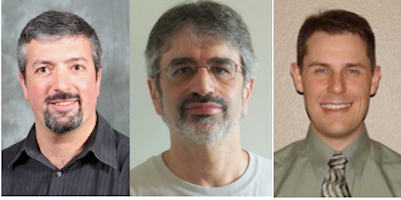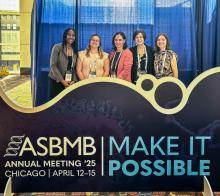
Three St. Mary’s College of Maryland faculty members were recently selected to participate in the U.S. Navy’s Summer Faculty Research Program at the nearby Naval Air Station Patuxent River (NAS Pax River). The awarded fellowships will fund Joshua M. Grossman, professor of physics and physics department chair; Charles Adler, professor of physics; and Daniel Chase, assistant professor of chemistry, during research at NAS Pax River in the summer of 2020. The Summer Faculty Research Program is run through the U.S. Navy Office of Naval Research and provides science and engineering faculty members from institutions of higher education the opportunity to participate in research of mutual interest to the faculty member and peers at U.S. Navy laboratories for a 10-week period.
Professor Grossman and his students research atoms captured and cooled to a fraction of a degree above absolute zero, using lasers and magnetic fields. Grossman’s fellowship project is titled: “Second-order quantum correlations for enhanced contrast in an atom interferometer.” This work seeks to increase the precision and utility of extremely sensitive instruments in the presence of phase noise or other interference. The technique will aid in the transition of atom interferometers from the laboratory to the field where they can be applied as necessary. Undergraduate Harry Bauman '22 will work on the same project as Grossman during his fellowship, via the Navy's STEM Student Employment Program.
Professor Adler’s research focuses on atomic physics and atmospheric optics. His summer 2020 research project is titled: “Modeling the scattering of orbital angular momentum beams by particulates and diffuse reflectors.” He plans to develop mathematical and computer models to simulate light scattering of orbital angular momentum beams propagating through water. Understanding this physics will help inform how optical vortices can be used for Naval applications in ocean remote sensing, enhanced communications for command and control, and improved undersea domain awareness.
Assistant Professor Chase’s lab uses synthetic organic chemistry to explore research avenues such as designing fluorescent dyes with useful properties and examining the activation of industrially important small molecules. Chase’s summer 2020 research project is titled: “Fluorescence detection of mechanical stress.” Among other applications, these stress-responsive fluorescent dyes may help evaluate sustained damage on fixed-wing aircraft, which is a recurring maintenance issue for the Navy. At present, maintenance personnel have difficulty determining whether or not a fixed-wing system has undergone sufficient fatigue to warrant repair or replacement. Adding stress–responsive fluorescent dyes to existing epoxy coatings may allow for on–site maintenance personnel to quickly locate and accurately determine if structural fatigue has reached unacceptable stress thresholds.
The Office of Naval Research Summer Faculty Research Program webpage states that “program participants have an opportunity to establish continuing research relationships with the R&D personnel of the host laboratories which may result in sponsorship of the participant’s research at their home institutions.”



